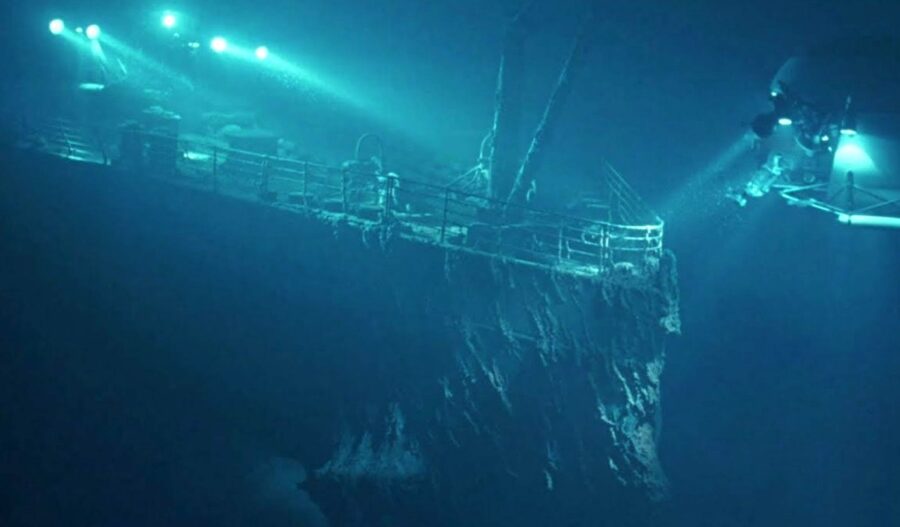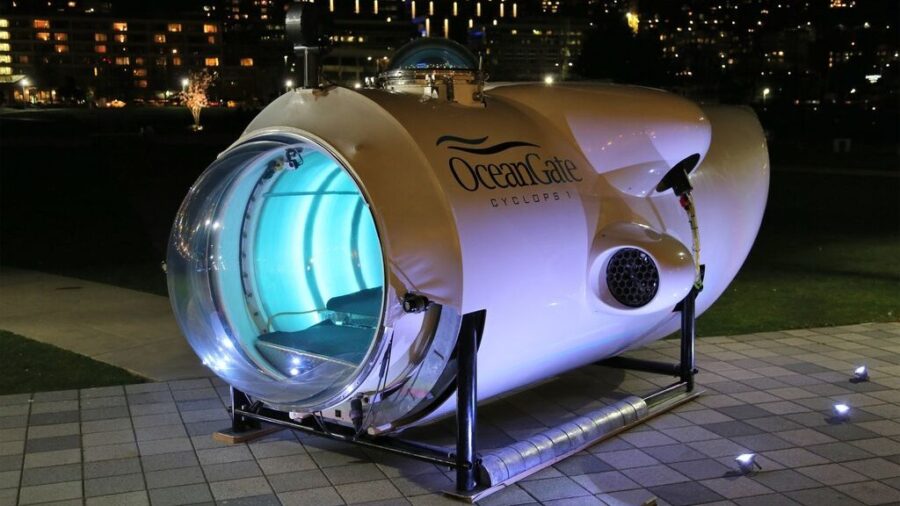Missing Titanic Sub’s Fate Determined And It’s Devastating
The Titanic exploring sub, missing for days, is believed to have imploded, killing all five of the vessel's inhabitants.

The US Coast Guard has confirmed that the debris field found in the search area near the Titanic, identified by an ROV (remotely operated vehicle), belongs to the Titan sub. Unfortunately, the five individuals on board are believed to have lost their lives after an official described the findings as being consistent with a “catastrophic implosion.”
Rear Adm. John Mauger, leading the Coast Guard briefing, expressed his heartfelt sympathies to the affected families. He also provided some additional information about the Titanic exploration sub. Per Deadline, the first piece of wreckage was identified as the tail cone of the Titan, located approximately 1600 feet away from the Titanic’s bow.
The ROV also managed to locate the front-end barrel of the pressure hull. “The debris is consistent with catastrophic loss of the pressure chamber,” Mauger said during the Titanic sub press briefing. OceanGate, the company which operated the Titanic sub, subsequently released a statement that confirmed the deaths of those on board the vessel.
“We now believe that our CEO Stockton Rush, Shahzada Dawood and his son Suleman Dawood, Hamish Harding, and Paul-Henri Nargeolet, have sadly been lost,” the Titanic sub statement read. The company added that these individuals were explorers with a unique sense of curiosity and a passion for protecting our oceans. “We grieve the loss of life and joy they brought to everyone they knew.”
The Titan submersible, a tourist vehicle used for underwater exploration, went missing on June 20 while surveying the Titanic wreckage. Owned by OceanGate Expeditions, it weighed approximately 23,000 pounds and was constructed with carbon fiber and titanium, incorporating safety features to monitor its structural integrity.
About the size of a minivan, the Titanic sub had the capacity to accommodate up to five adults. It is held underwater by ballast (heavy material used to make a ship steady) and has limited power reserves. That means it needed a support ship on the surface to launch and recover it from the depths of the ocean.
As the days passed, the search for the missing Titanic exploration sub grew increasingly frantic, with concerns about the remaining oxygen supply onboard reaching critical levels. On June 22, debris was discovered in the search area, suggesting that all five occupants had not survived. However, the exact circumstances of the accident remain unknown.

This isn’t the first time the Titanic sub experienced problems. During an expedition in 2022, OceanGate reported a battery issue on the submersible’s initial dive, requiring manual attachment to its lifting platform. However, the vessel had undergone over 50 test dives, reaching depths equivalent to those of the Titanic in deep waters off the Bahamas and within a pressure chamber.
Meanwhile, James Cameron, who directed the 1997 film Titanic drew a parallel between the Titan sub tragedy and the sinking of the legendary ship. “I’m struck by the similarity of the Titanic disaster itself, where the captain was repeatedly warned about ice ahead of his ship, and yet he steamed at full speed into an ice field on a moonless night,” the filmmaker told ABC News.
Cameron then described the Titan sub incident as a “very similar tragedy,” emphasizing that warnings at the “exact same site” were disregarded. The filmmaker also said he received confirmation of a “loud bang” within an hour of the sub going missing and that search efforts “felt like a prolonged and nightmarish charade.”
His claims come after the Wall Street Journal’s report on the secret US Navy underwater microphones detecting the implosion of the Titan submersible several days earlier. These reports and claims have yet to be addressed by OceanGate or the US Coast Guard.












